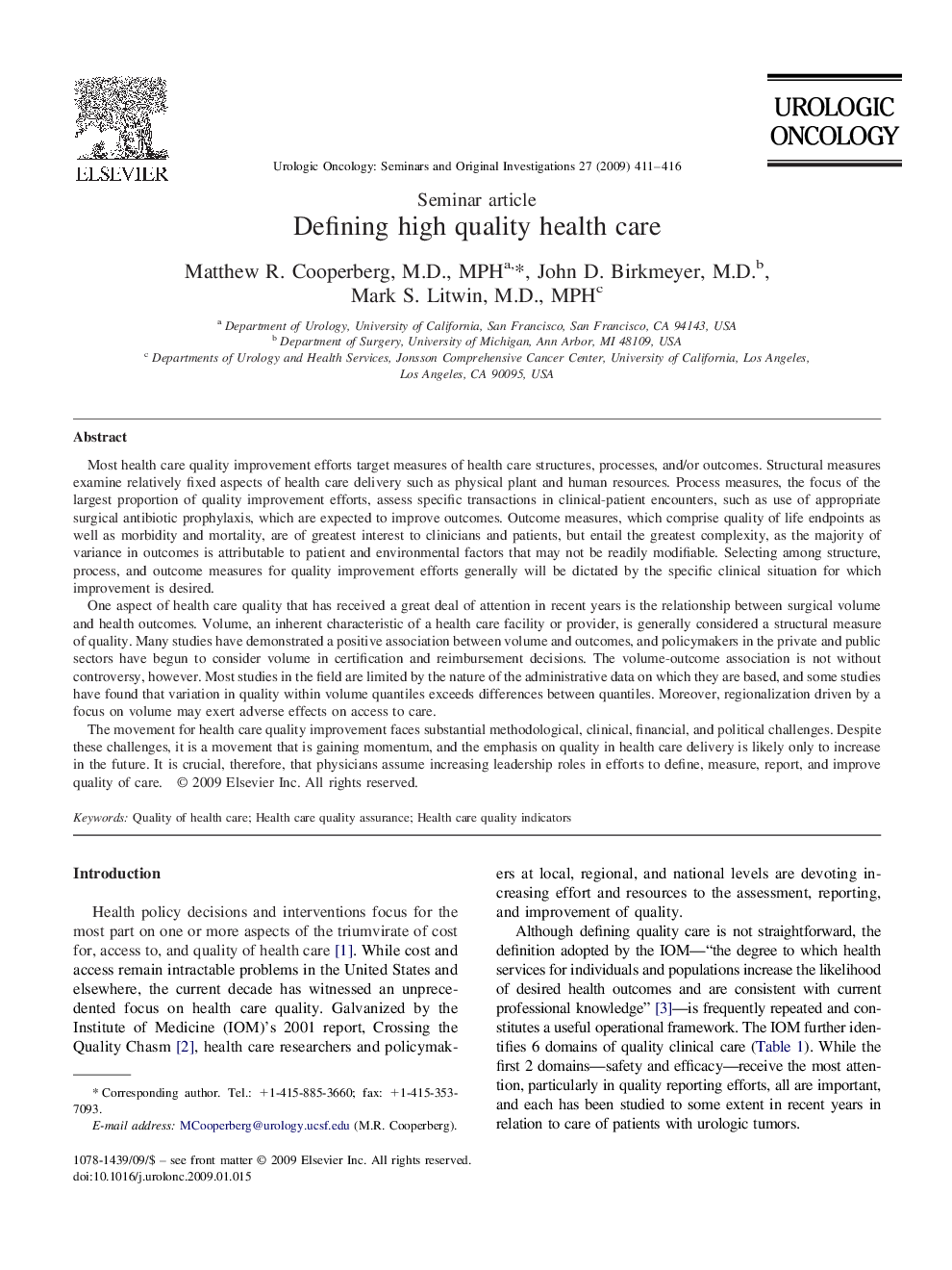| کد مقاله | کد نشریه | سال انتشار | مقاله انگلیسی | نسخه تمام متن |
|---|---|---|---|---|
| 4001401 | 1259408 | 2009 | 6 صفحه PDF | دانلود رایگان |

Most health care quality improvement efforts target measures of health care structures, processes, and/or outcomes. Structural measures examine relatively fixed aspects of health care delivery such as physical plant and human resources. Process measures, the focus of the largest proportion of quality improvement efforts, assess specific transactions in clinical-patient encounters, such as use of appropriate surgical antibiotic prophylaxis, which are expected to improve outcomes. Outcome measures, which comprise quality of life endpoints as well as morbidity and mortality, are of greatest interest to clinicians and patients, but entail the greatest complexity, as the majority of variance in outcomes is attributable to patient and environmental factors that may not be readily modifiable. Selecting among structure, process, and outcome measures for quality improvement efforts generally will be dictated by the specific clinical situation for which improvement is desired.One aspect of health care quality that has received a great deal of attention in recent years is the relationship between surgical volume and health outcomes. Volume, an inherent characteristic of a health care facility or provider, is generally considered a structural measure of quality. Many studies have demonstrated a positive association between volume and outcomes, and policymakers in the private and public sectors have begun to consider volume in certification and reimbursement decisions. The volume-outcome association is not without controversy, however. Most studies in the field are limited by the nature of the administrative data on which they are based, and some studies have found that variation in quality within volume quantiles exceeds differences between quantiles. Moreover, regionalization driven by a focus on volume may exert adverse effects on access to care.The movement for health care quality improvement faces substantial methodological, clinical, financial, and political challenges. Despite these challenges, it is a movement that is gaining momentum, and the emphasis on quality in health care delivery is likely only to increase in the future. It is crucial, therefore, that physicians assume increasing leadership roles in efforts to define, measure, report, and improve quality of care.
Journal: Urologic Oncology: Seminars and Original Investigations - Volume 27, Issue 4, July–August 2009, Pages 411–416